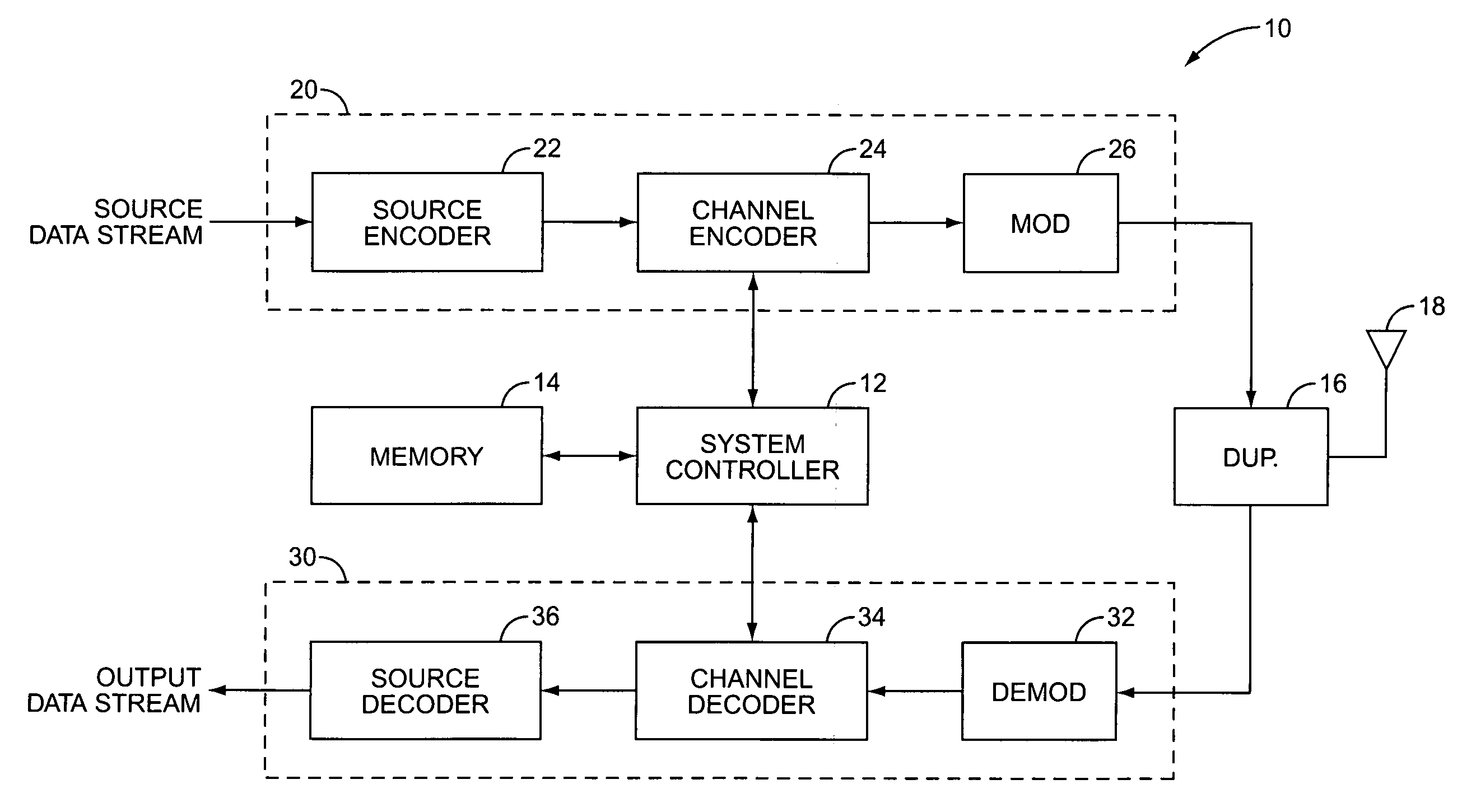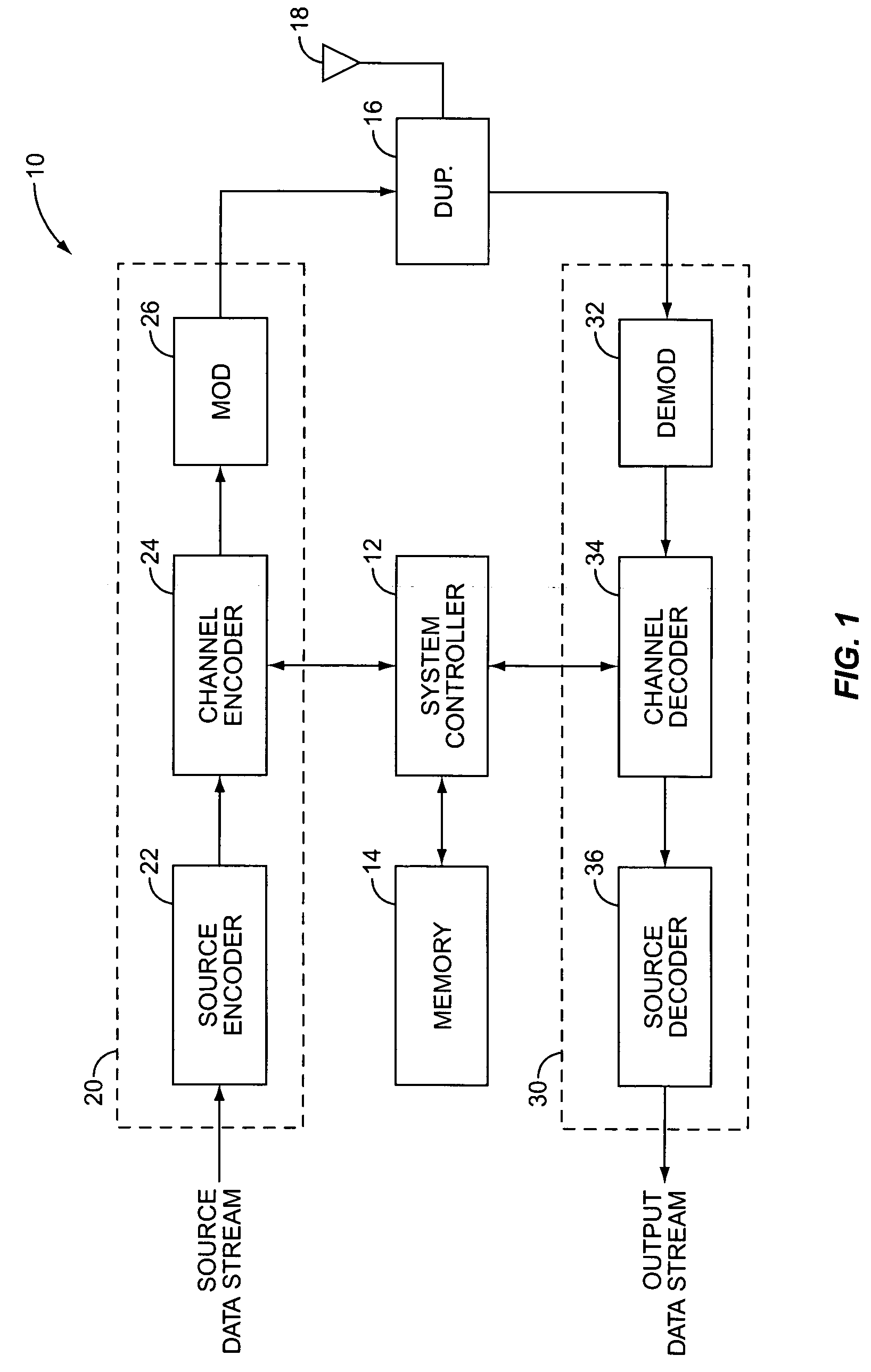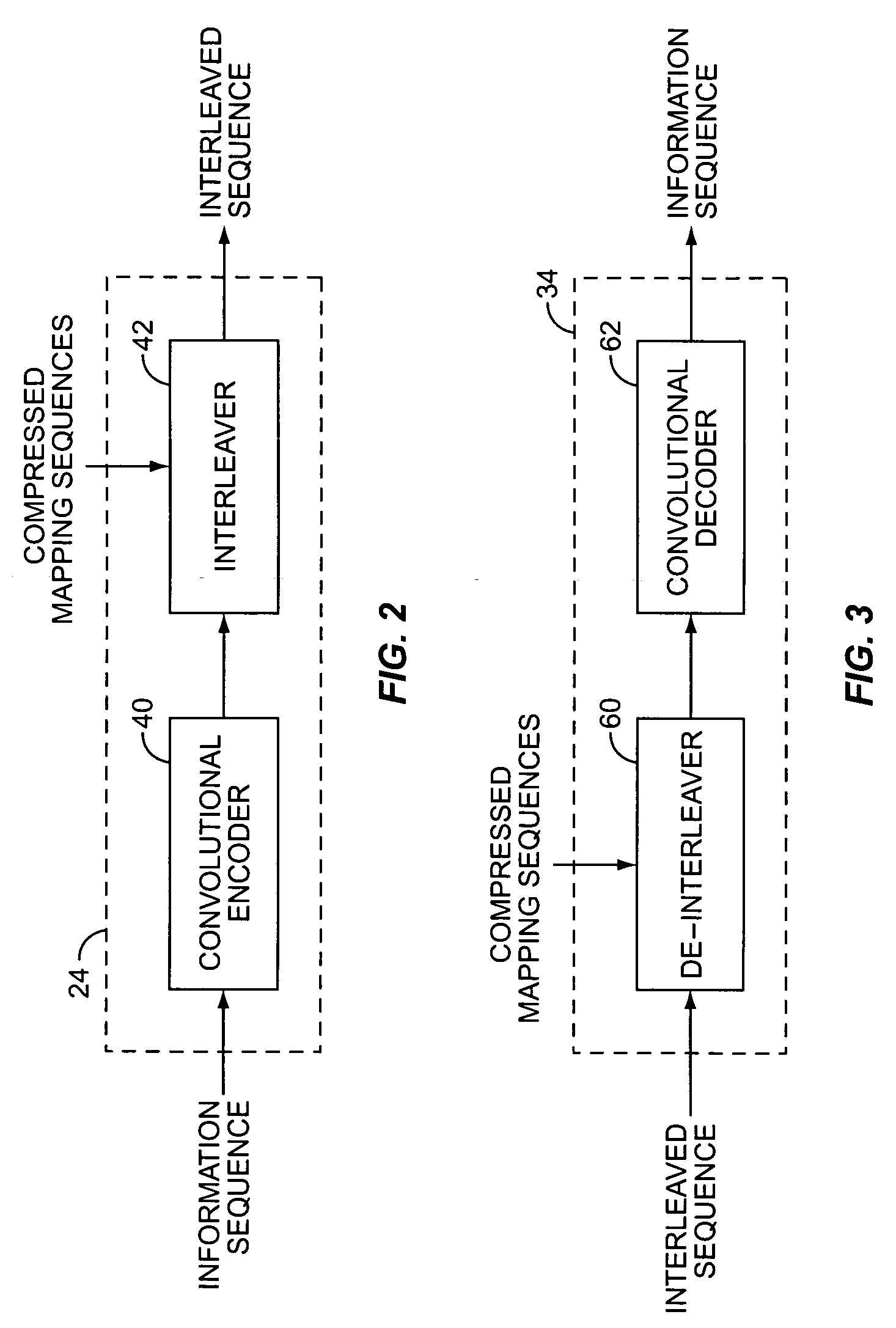Interleaving/de-interleaving using compressed bit-mapping sequences
- Summary
- Abstract
- Description
- Claims
- Application Information
AI Technical Summary
Benefits of technology
Problems solved by technology
Method used
Image
Examples
Embodiment Construction
[0018]FIG. 1 illustrates a mobile communication device generally indicated by the numeral 10. The mobile communication device 10 comprises a system controller 12 to control the overall operation of the mobile communication device 10, a memory 14 to store programs and data needed for operation, a transmitter 20 to transmit signals, and a receiver 30 to receive signals. The transmitter 20 and receiver 30 are coupled to a common antenna 18 by a duplexer or switch 16 that permits full duplex operation.
[0019] The transmitter 20 receives a source data stream from an information source, processes the source data stream to generate a transmit signal suitable for transmission over a radio channel, and modulates the transmit signal onto an RF carrier. The transmitter 20 includes a source encoder 22, a channel encoder 24 and a modulator 26. The source encoder 22 removes redundancy or randomizes the source data stream to produce an information sequence that has been optimized for maximum infor...
PUM
 Login to View More
Login to View More Abstract
Description
Claims
Application Information
 Login to View More
Login to View More - R&D
- Intellectual Property
- Life Sciences
- Materials
- Tech Scout
- Unparalleled Data Quality
- Higher Quality Content
- 60% Fewer Hallucinations
Browse by: Latest US Patents, China's latest patents, Technical Efficacy Thesaurus, Application Domain, Technology Topic, Popular Technical Reports.
© 2025 PatSnap. All rights reserved.Legal|Privacy policy|Modern Slavery Act Transparency Statement|Sitemap|About US| Contact US: help@patsnap.com



